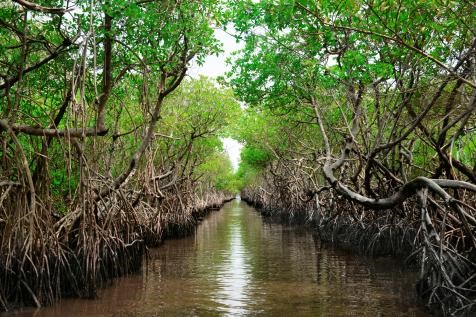Free Courses Sale ends Soon, Get It Now


Free Courses Sale ends Soon, Get It Now



Disclaimer: Copyright infringement not intended.
Context
Details
What is a mangrove?
Why mangroves matter?
What are some of the special features of mangroves?
Importance of Mangroves
Importance of Mangroves and Climate Impact
Status of Mangroves in India
Threats to Mangroves
Conservation Efforts
Conclusion
Preserving mangroves is vital for biodiversity, climate change mitigation, and sustaining livelihoods for coastal communities. International cooperation, effective conservation programs, and sustainable practices are essential to protect and restore these valuable coastal ecosystems for the well-being of present and future generations.
|
PRACTICE QUESTION Q. Which of the following statements about mangroves is/are correct? Choose the correct option: 1.Mangroves cover a significant portion of the Earth's surface and store more carbon per hectare than terrestrial forests. 2.Mangroves are flowering trees. 3.The "Mangrove Initiative for Shoreline Habitats & Tangible Incomes" (MISHTI) was launched during the 27th Conference of Parties (COP27) to the United Nations Framework Convention on Climate Change. Options: A.Only statement 1 is correct. B.Only statement 2 is correct. C.Only statement 3 is correct. D.Both statements 1 and 3 are correct. Answer: B |
© 2024 iasgyan. All right reserved